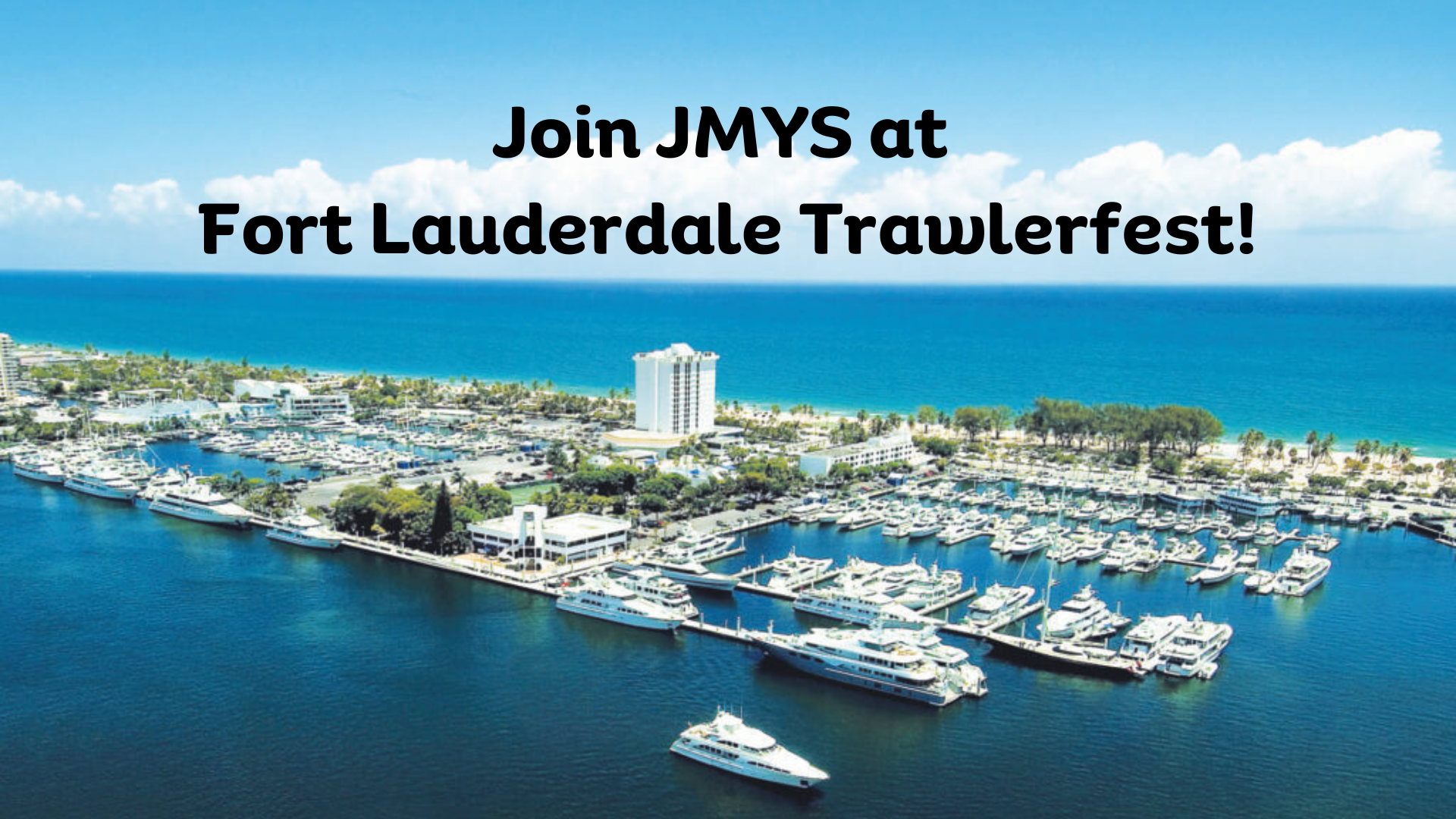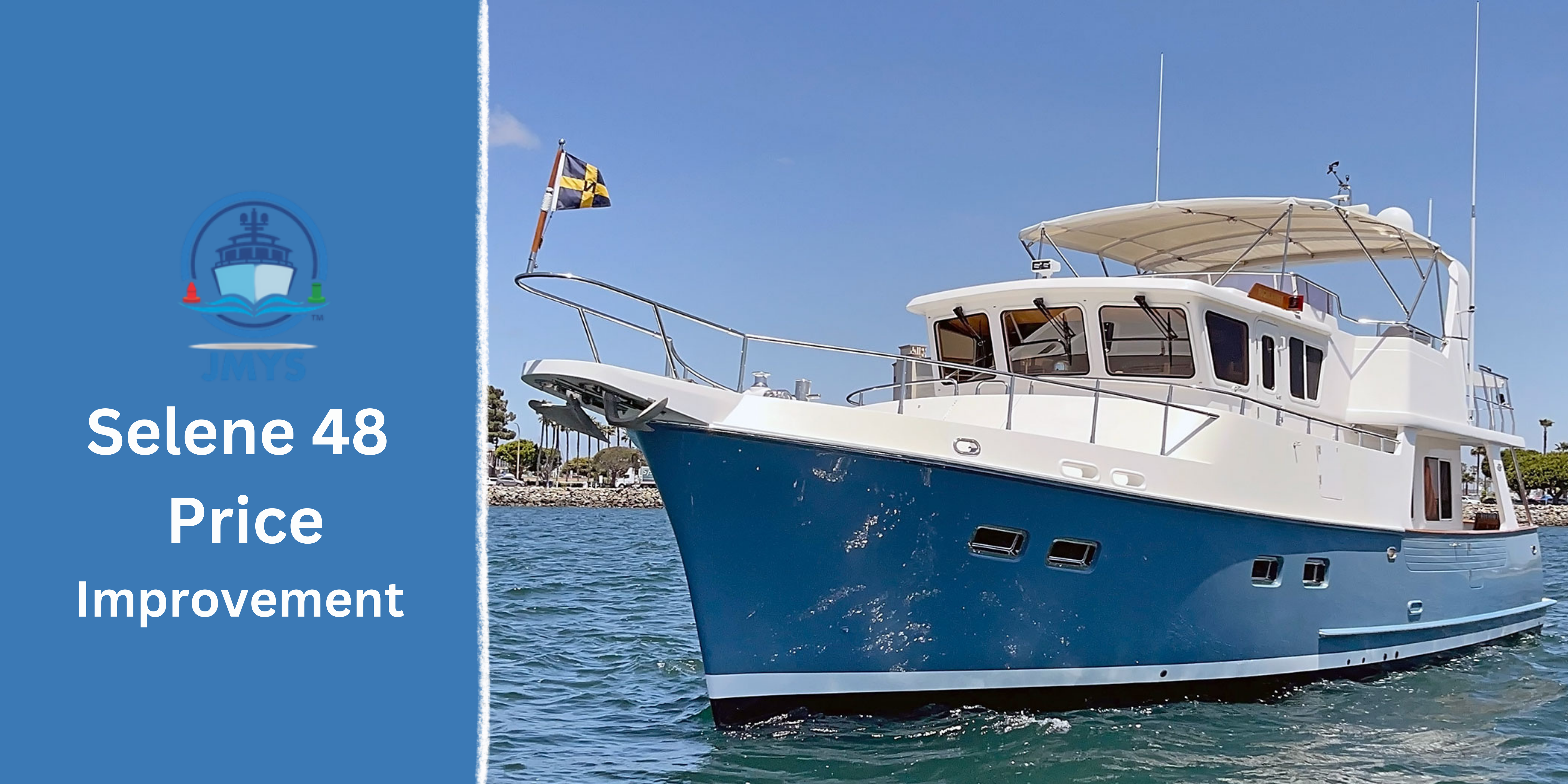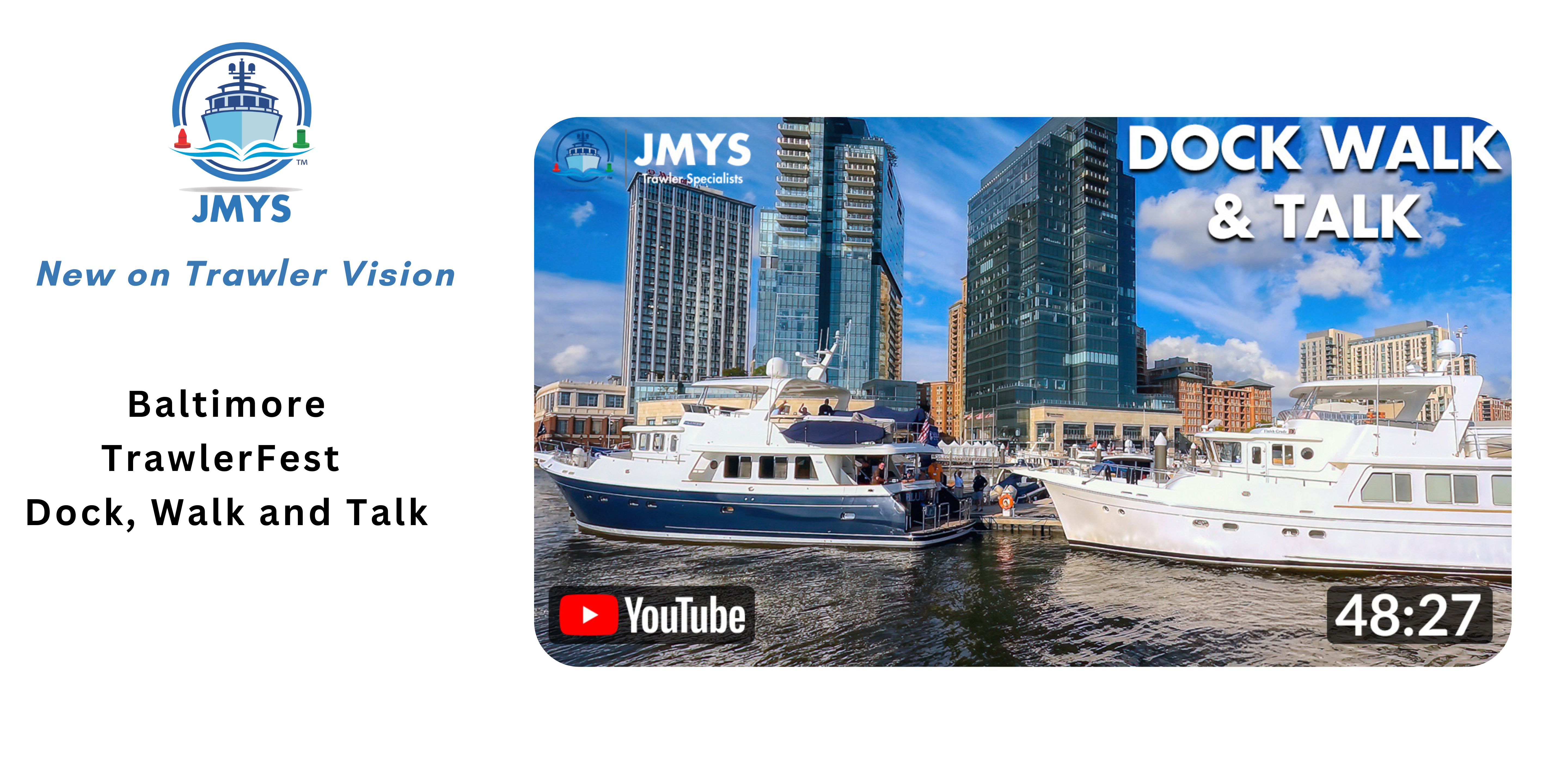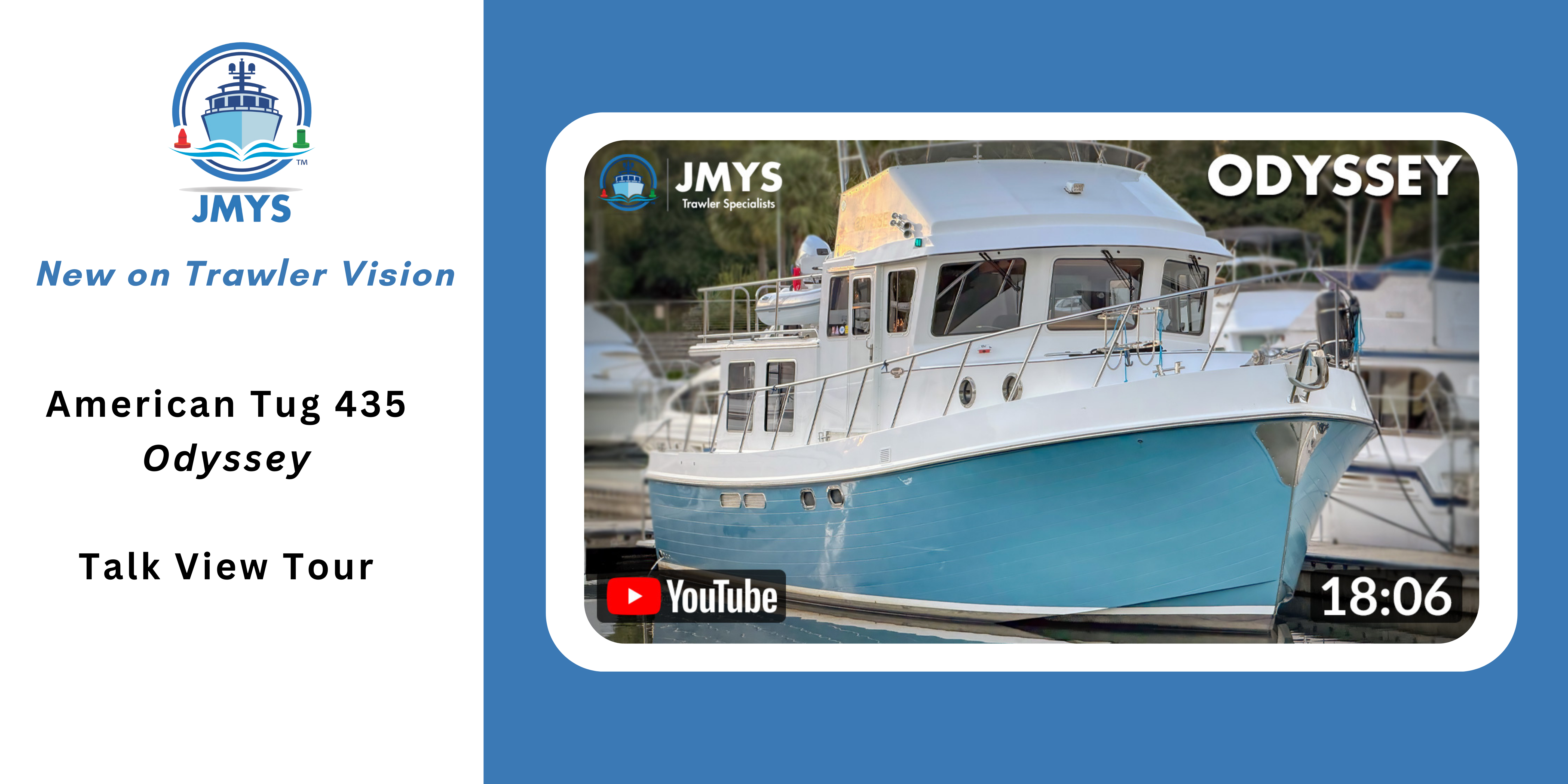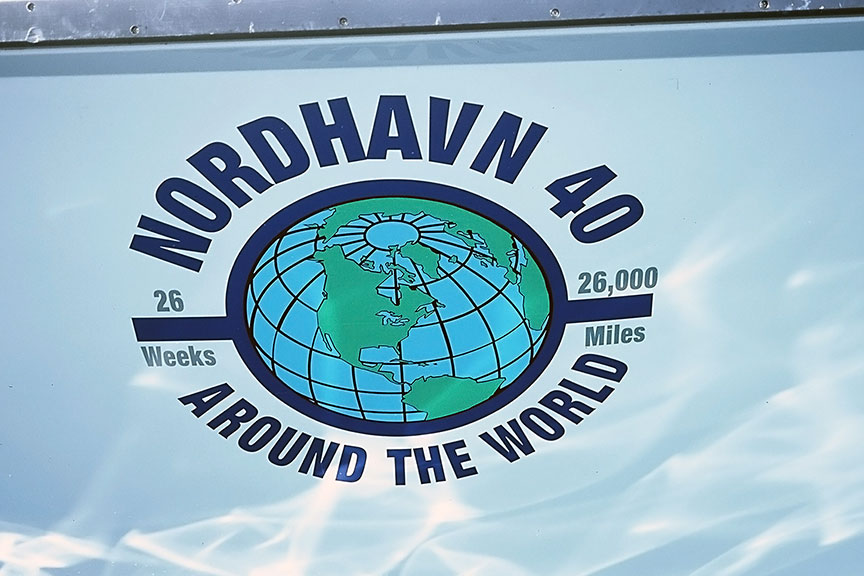
On June 30, 2002, the most famous Nordhavn 40 in the world sailed into Dana Point harbor and into the record books as the smallest production trawler to complete a circumnavigation.

Twenty years have gone by and looking back, the ATW (Around the World) was instrumental in showing boaters all over the world that the Nordhavn brand is the ultimate choice for reliable offshore cruising.
The Nordhavn 40, the smallest full displacement model, was built as a company boat and it was important that she was stock – no fuel bladders for extended range. The point was to showcase that the design was capable for world voyaging as-built – and who better to prove this than the team behind it?
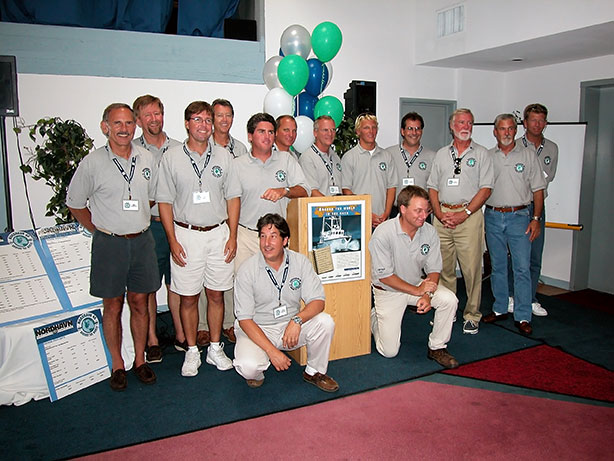
The ATW trip is a tribute to the four enterprising businessmen/owners of PAE/Nordhavn. Starting with Jeff Leishman’s design, Jim Leishman’s we-can-do-this-vision, Joe Meglen’s voice of reason and Dan Streech’s unbridled enthusiasm, the four owners of PAE pulled this incredible feat off during a turning point in world events…the first crew departed from California to Hawaii on November 3, 2001 only a few weeks after the devastating September 11th terrorist attacks.
It would have been easy and practical to scrap the trip due to all of the global uncertainty. The promotion had already begun, advertising and marketing in place, and any critics would have understood, but that’s not how PAE has built up their Nordhavn brand. So, the project was green lighted at full speed ahead (in this case about 5 knots!).
The Nordhavn website did a great job of chronicling this adventure (still available on the www.nordhavn.com website).

The entire trip lasted 24 weeks/170 day (blazing fast especially at a speed that many people can run faster than). We all know that this is a story with a happy ending, but the potential for a mishap or disaster was always lurking.

We had a laptop in the pilothouse with email capability and would take turns pounding away on the keyboard with daily reports while balancing on a wooden stool. The intrigue and “what will happen next” uncertainty with equipment, systems, weather, international travel, customs, etc. made the daily email journals riveting to look forward to. Many people made it a new habit to enjoy pouring over the latest post with their morning coffee.
In many conversations I have had since with people who got hooked with the daily updates, the ATW trip was a marvelous distraction. The number of armchair admirals and encouraging supporters who cheered PAE on by emailing the crew as they crossed oceans added greatly to the success of the adventure.
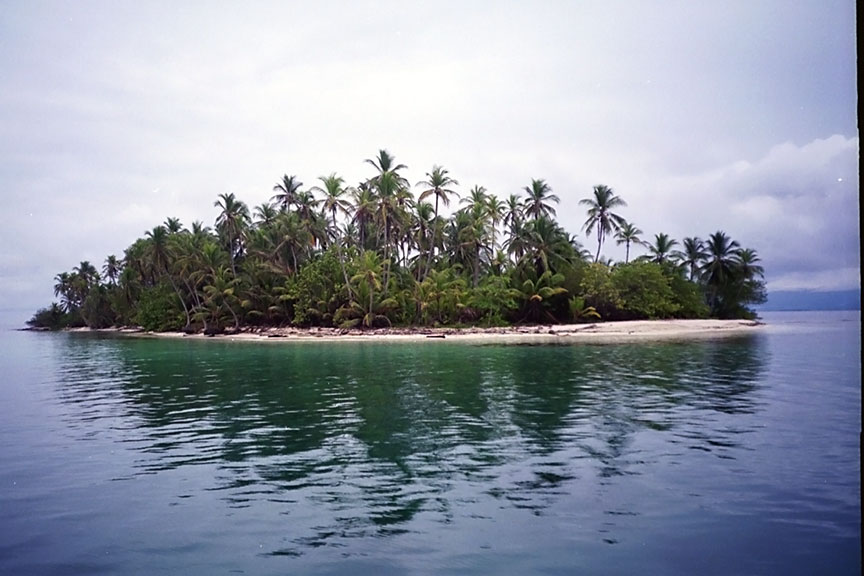
I remember flying to Barbados along with Leg 4 captain Dan Streech and our third crew mate, Mike Gregovich, with excitement and anticipation of taking the baton and crossing the Caribbean before transiting the Panama Canal. The ATW 40, appropriately named “Nordhavn” was a little behind schedule and we had a couple of days exploring Barbados, eating flying fish like French fries and I will never forget the field trip we made to the Mount Gay rum factory (hey, when in Barbados…).

I’ve lost track of how many salespeople and project managers from PAE took part to crew the various legs, but it was an inspiring circumnavigation of camaraderie and discovery that bonded the employees like no other adventure could. We had journalists on board who wrote about the trip in a broad spectrum of publications. Looking back, I don’t see any other boat builder who has ever come close to putting it all on the line and putting their money where their mouth is, so to speak.
The quietly confident hull 21 purred around the world, dodging typhoons, catching fish, warning off probable pirates and ticking along all the while like a fine Swiss watch continuing virtually non-stop. With no time to smell the roses or sightsee, each destination was selected to create a convenient route for taking on fuel, changing crew, and re-provisioning.
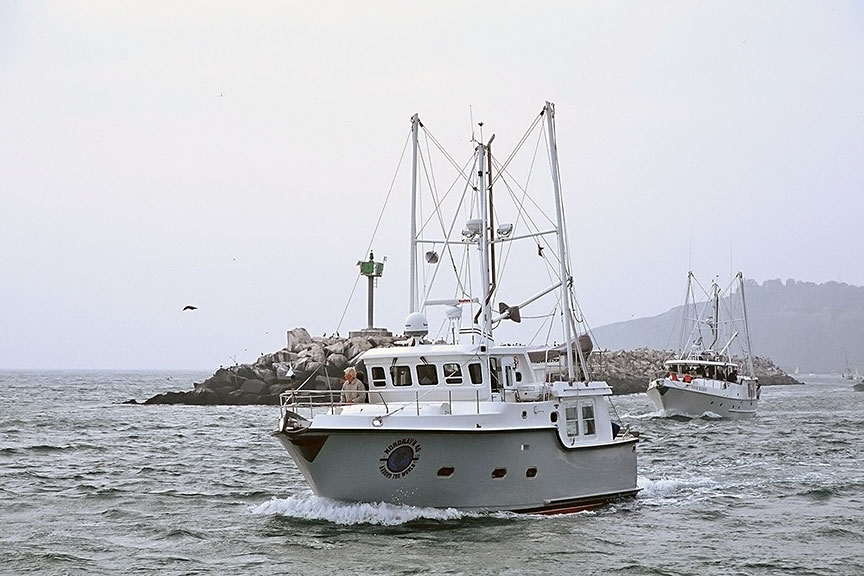
The trip recap and lessons learned has many fascinating facts. One that I think is fascinating is that PAE spent more money on satellite phone coverage than diesel fuel. Air conditioning was added at a stopping point halfway across the Pacific.

The importance of access for serviceability of ALL equipment became an imperative for all future builds. Fishing skills and eating different types of fish turned several of the crew into converts (and the importance of knowing where the Wasabi was stowed).
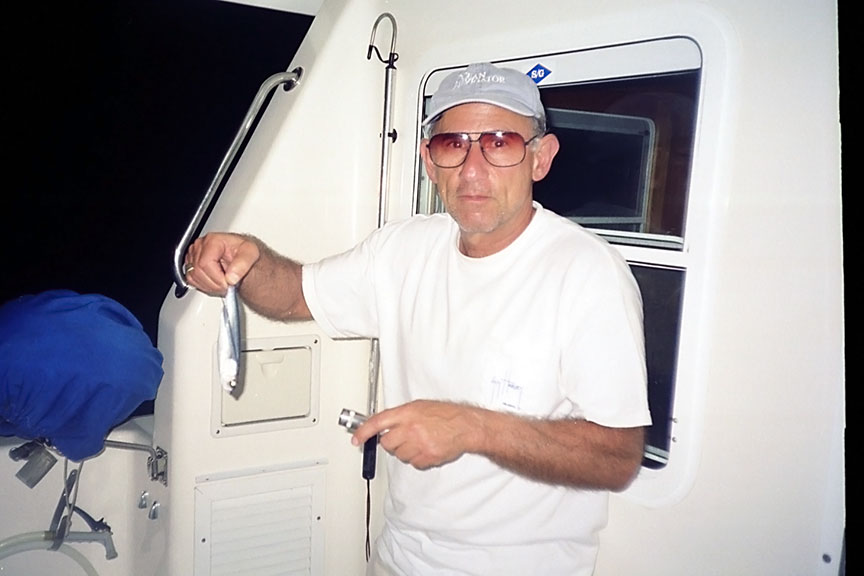
One of the most significant results and a clear benefit from the ATW was the creation of the Nordhavn 43 design which evolved as the best answer to the “what can we improve on the 40?” question we asked ourselves. Some of the things we learned and desired that were incorporated into the Nordhavn 43 were: more fuel capacity, room for a helm chair in the pilothouse, a walking side deck, a separate top load freezer and two heads (of course, everyone knows that two heads are always better than one!).
Upon personal reflection, the ATW is one of the highlights of my boating career. I forged a special bond with my shipmates, Dan and Mike, and across the board all who participated gained a better respect and appreciation for individual and collective importance in building a successful offshore yacht brand and the power of cooperative company culture.
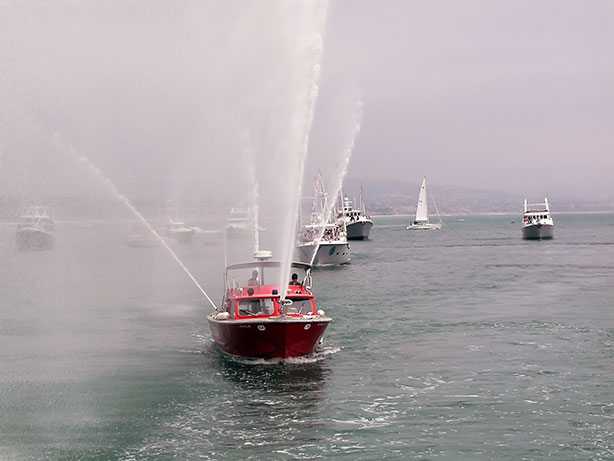
The last haul was brief on June 30th, 2002. All of the crew hopped on Nordhavn in Oceanside to make the final homecoming leg into Dana Point harbor where our family and friends cheered from the sea wall. A fleet of Nordhavns escorted us and the fire boat showered us with appreciation. A lot of laughter, pats on the back and consumption of cold adult beverages lasted into the night as we had a large dinner celebration.
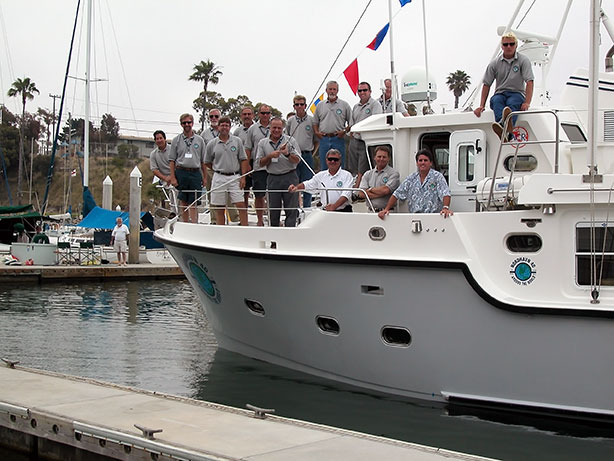
Congratulations Nordhavn! The ATW was a big deal and you deserve all of the acclaim that it generated.
Perhaps in 2027, PAE will celebrate with a twenty fifth silver anniversary reunion party?

